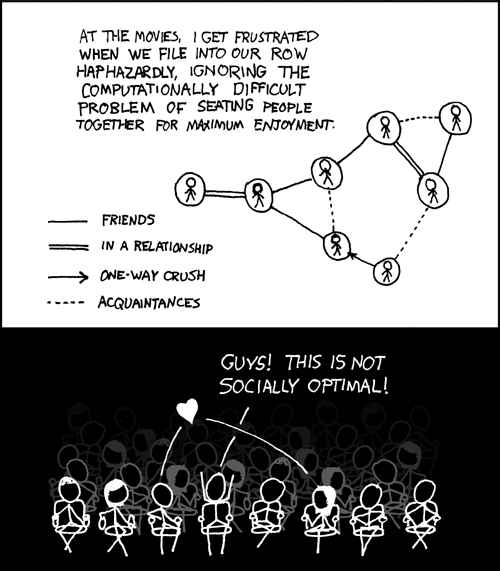Latest news about Bitcoin and all cryptocurrencies. Your daily crypto news habit.
The AXE algorithm matches peers like we wish eHarmony would.
Pareto efficiency results in an outcome where everybody is as well off as they could be without hurting another person. Although pareto optimality doesn’t necessarily guarantee that the system is ideal, non-pareto optimal systems are definitely less than ideal. If, after all, an arrangement can be made such that even one person can benefit without anyone else losing out — why hasn’t that system been implemented instead?
 This cartoon taken form XKCD
This cartoon taken form XKCD
The goal of AXE is to incentivize trustless bandwidth exchange in a decentralized mesh network.
In AXE, relay peers place a bid for how much their transmission fees will be in order to connect a requester with the desired end peer. The requester can then choose to accept the relay peer (or connect directly, if possible) that offers the lowest fee to establish the desired connection. Bandwidth is exchanged incrementally, such that the relay can immediately drop a connection if a new requester accepts a higher bid to establish a connection. In so doing, AXE creates pareto-optimal outcomes because it pays for relay peers to be honest about the lowest cost for which they are willing to transmit the data at a given time.
Meanwhile, requesting peers also maintain optimal matching with relay peers based on the urgency of their bandwidth demands. A requesting peer may wait for new relay peers with lower rates to become available, effectively trading latency concerns off with bandwidth price concerns. Individuals who are requesting static documents have more time to find and establish relationships with an end peer, while someone requesting a connection to Netflix servers may be willing to pay more for lower latency.
AXE thus creates a strategyproof mechanism for matching requesters and relay peers. It pays to be honest about one’s shifting economic preferences on a dynamic bandwidth marketplace.
I am building out the censorship-proof infrastructure of the decentralized web with ERA. Want to know more about crypto incentives? Check out my article, Cryptoeconomics and Mechanism Design: 5 ways humans will interact with cryptocurrencies differently than fiat.
If you enjoyed this article, it would mean a lot if you gave it a clap, shared it, and connected with me on Twitter!
Cryptocurrencies, Matchmaking, and Pareto-Optimal Gold Digging was originally published in Hacker Noon on Medium, where people are continuing the conversation by highlighting and responding to this story.
Disclaimer
The views and opinions expressed in this article are solely those of the authors and do not reflect the views of Bitcoin Insider. Every investment and trading move involves risk - this is especially true for cryptocurrencies given their volatility. We strongly advise our readers to conduct their own research when making a decision.
